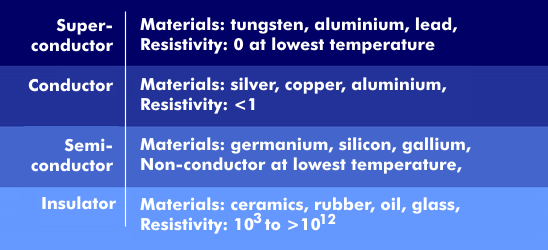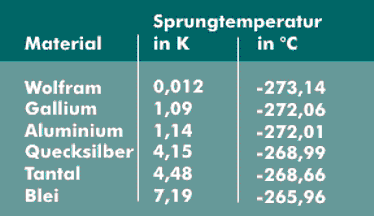superconductivity
Superconductivity is the sudden disappearance of electrical resistance when the temperature falls below a certain level. In the case of classical superconductors, the temperatures are a few degrees above absolute zero of -273.15 °C. Developments are moving toward raising the temperature at which this effect occurs to room temperatures. The technology that is developing as a result is that of high-temperature superconductors(HTSL).
For some electrical conductors, a sudden disappearance of resistance occurs at the lowest temperatures. Below the material-dependent transition temperature, the electrical resistance drops to an unmeasurably small resistance value. The conductivity thus goes to infinity. Since superconductors have no resistance, large amounts of energy can be transmitted through them without loss. Depending on the hopping behavior, a distinction is made between two types, the superconductor of the 1st type and the superconductor of the 2nd type:
Superconductor type I: The classification of superconductors is based on the course of the magnetization curve. Superconductors of the first type include most superconducting elements. In superconductors of the first type, negative magnetization occurs in a magnetic field. This increases proportionally as the magnetic field is increased until it collapses abruptly when the critical field strength is exceeded and the sample becomes normal conducting. The point at which the magnetization breaks down occurs at the so-called critical magnetic field "H".
TypeII superconductors: Type II superconductors have two critical field strengths. Up to a critical magnetic field "H", superconductors of the second type behave like those of the first type. Above this field strength, the magnetic field penetrates the superconductor. Only at the second field strength does the superconductivity break down. The relatively large magnetic fields required for this make this type interesting for the construction of magnets and other technical applications.
High-temperature superconductors (HTSL), High Temperature Superconducting( HTS), enable a significant increase in the power density of electric drives. It is a class of ceramic superconductors with particularly high transition temperatures.
Current development topics include machines with superconducting DC windings for ship propulsion and wind power generators, high-speed magnetic tracks, computer chips with ultra-high clock rates, energy storage systems based on superconducting magnetic coils, detectors for submarines, and many more.



